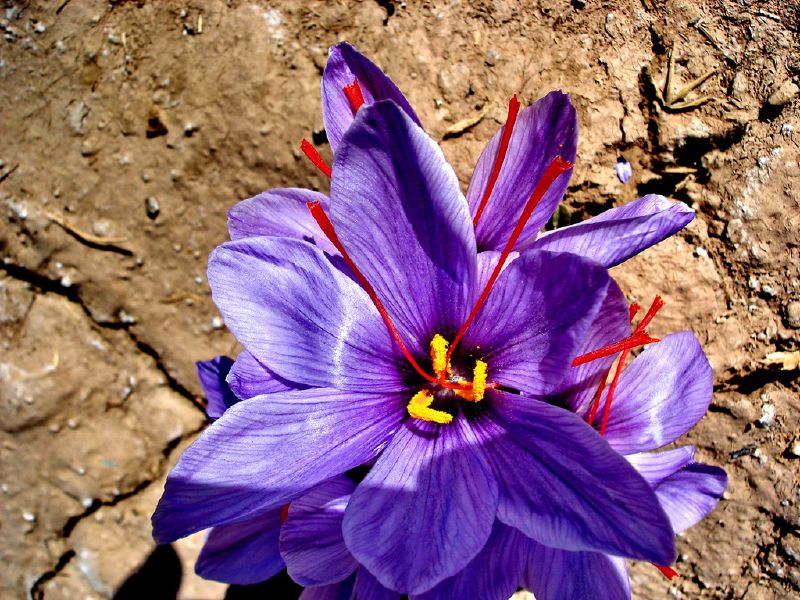Iran harvests about 90% of the world’s saffron production, but a lot of the exported saffron is later packed, relabeled under various brands in places like the UAE and Spain and re-exported to other countries. If this was not enough for discrediting Iranian saffron, more recently Afghanistan is turning into a rival, producing plenty of fake saffron crocuses smuggled from Iran in the past few years.
So significant is the damage from substandard saffron exported from Afghanistan to this top quality Iranian spice market that the Iran chamber of commerce's agricultural committee has called it "another threat to Iranian saffron." The head of the chamber's trade committee says "not only is it impossible to stop saffron crocus smuggling to Afghanistan due to the vast common border, it would also be an exercise in futility due to the high volume of contraband saffron crocuses already being produced in Afghanistan."
According to IRNA, 126 tons of saffron worth $200 million was exported from Iran to 46 countries in the previous Iranian year (March 2013-2014), around half of which was relabeled after being purchased by businesses in Spain and UAE and re-exported.
A member of Iran's saffron union says the high costs associated with export in small packages are the primary reason Iranian exporters prefer selling in bulk. He estimated that 10 kilograms of saffron would weigh as much as 300 kilograms once packed.
On the other hand, the contraband saffron from neighboring Afghanistan has given rise to new competition in the global market, which had for many years been dominated by Iran. Iran is the world's top exporter of saffron, both in terms of quality and volume of export.
Mohammad Hossein Roshanak, head of the trade committee of Mashhad's chamber of commerce, mines and agriculture, believes it's "too late to restrict the smuggling of saffron crocus to Afghanistan, because that country has already harvested much of the precious food product."
He expressed concern that the Afghan saffron is being exported to other countries under the "brand of Iranian saffron despite being produced less hygienically and with inferior quality compared to our saffron."
Citing "substandard packaging and lack of allure for customers" as other reasons for Iran falling behind in saffron and dates export, Roshanak suggested rebranding Iranian saffron to distinguish it from competitors.
He also called for private sector investment in the processed food industry with government support, underlining the need for clear export rules, regulations and incentives for exporters. According to the head of agricultural committee of Iran's chamber of commerce, Shamsali Hadizadeh Moallem, the main issue with the saffron industry is the "lack of sustainable exports for agricultural products." He expressed hope that better hygiene in the process of saffron production would improve and expand exports.
Moallem also suggested reviewing Spain's "success story in saffron export" to better understand the reasons that have helped its growth and to use the example to produce more consumer-friendly products of higher quality and reasonable price.


